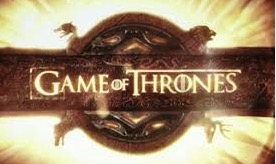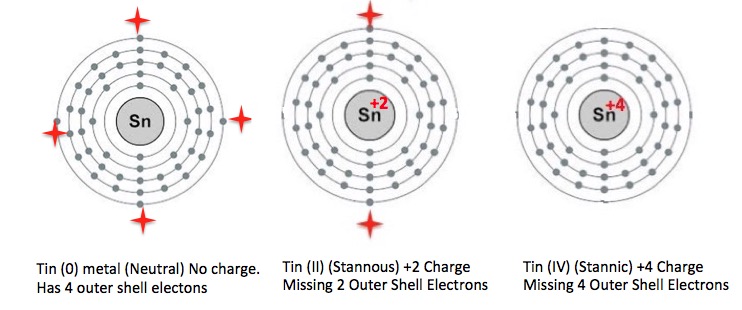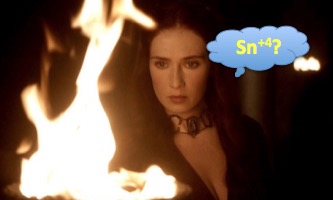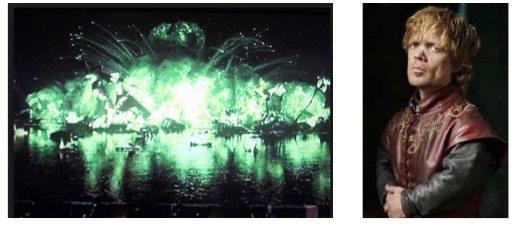
I'm more than a bit tired of writing about opioids. Need a break. But since I've started writing about them I've learned quite a bit about addiction. Which is why I know that I have one - Game of Thrones. Big time.

12 Steps: Not nearly enough
So, as a chemist/GOT addict, I could not help but notice that there was a rare teaching opportunity in the show, courtesy of one of the more intriguing characters - King Stannis Baratheon. Plus, this is a whole lot more fun than writing about than some stupid chemical.

Stannis Baratheon: King of redox chemistry
Only a chemist would even think about what is to follow, but it makes perfect sense to us. Why? Because the dude was a walking chemistry lesson.
First, he is named after a metal—tin (Sn, from the Latin stannum, see where I'm going here?). Not only is tin a perfect example of oxidation-reduction (redox) chemistry, but the chemistry actually fits into the plot in ways that only your average deranged chemist would ever recognize. So, here's a chemistry lesson from an average deranged chemist.
Tin exists in three forms depending on the number of electrons on its outer shell — Sn0 (the metal), Sn+2 (also called tin (II), aka stannous, which is in the +2 oxidation state. (NOW do you see where I'm going?), and Sn+4 (tin (IV), aka stannic).
Quick lesson on oxidation states!

Elements are neutral (they have no charge), which means that they must contain the same number of electrons (negative) surrounding the nucleus as protons (positive) inside it. The two charges balance each other out. So, elemental tin contains 50 protons in its nucleus and also 50 electrons surrounding it, which is why it has no charge (Figure 1). But when tin (0) is oxidized (the removal of electrons) it is left with only 48 electrons, which give it a charge of +2. Tin (II) can further be oxidized to tin (IV) by losing two more electrons, leaving it with a charge of +4. The addition or removal of electrons from an atom is the essence of oxidation-reduction chemistry.

Figure 1. Tin Oxidation States: Neutral, +2, +4. Outer shell electrons are denoted by the red stars. Image: Wikipedia Commons
Here's how you make tin (II) from tin (0). Very easy. Just chuck in some hydrochloric acid and stand back.

(Another mini-chemistry lesson! In stannous chloride, the tin is in the +2 oxidation state. Chloride is always -1. To keep it neutral two chlorides are required, thus the formula.)
Back to GOT. Here's where the chemistry really dovetails with the show: the oxidation of stannous (II) chloride to stannic (IV) chloride. Here's the equation:

Hmmm. Oxygen. This is not insignificant. If you watch the show you already know that fire has magical powers. And, what is fire? It is the heat that is given off when something burns (reacts with oxygen).
Therefore, it is not unreasonable to conclude that Stannis might be oxidizable:
Stannous [sic] Baratheon + O2 --------> Stannic Baratheon
Well, the writers got the chemistry right but picked the wrong character. It was Stannis' daughter Shireen who got oxidized, thanks to evil screwball Melisandre (Red Woman).

The Red Woman ponders tin chemistry
At this point in the show, Stannis, for a variety of reasons, (1) was well on his way to losing both the war and his royal marbles, and was rendered powerless against the spell of Melisandre, who has precisely one job— worshiping the Lord of Light. And in the show, light always= fire. Melisandre regularly displayed her devotion to her Lord by incinerating everyone she could get her hands on. As the war became more and more hopeless, Melisandre convinced Stannis, who was completely flipped out of his gourd at this point, that it could only be won making a sacrifice to the Lord of Light: Shireen: By burning her at the stake, which is, at the very least, suboptimal parenting by even the most modest of standards.This scene is not for the faint of heart.
Hang on chemists wannabes! It gets better. The show ends in perfect redox symmetry. If Stannis can be oxidized, he can surely be reduced (2), right? And he sure was! Although not in the chemical sense of the word. He ran afoul of Brienne of Tarth, a huge, highly skilled, ass-kicking blonde, who is in a perpetually bad mood. Here's the equation:

So, there ya go. Tin, electrons shells, redox chemistry, human sacrifice, a blonde who goes 6-3/185 easy, and what is arguably the best TV show ever, all rolled up into one (hopefully coherent) article.
I hope you at least enjoy this damn thing because it's taken me all day. Now it's night, which I hear is not only dark but also full of electrons.
Notes:
(1) One of the reasons that Stannis' screws started coming loose was because he got his Stann-ass kicked when everyone's favorite character, Tyrian, who figured out how to burn up Stannis' massive fleet of ships using Wildfire, a flammable liquid which was created by alchemists. OK, the chemistry here isn't so great but it's still better than the tripe that the Environmental Working Group writes about.

Stannis' fleet goes bye-bye, thanks to Tyrion Lannister, played by the incomparable Peter Dinklage. Photos: Wikipedia.
(2) Reduction, the addition of electrons, is the opposite of oxidation.



